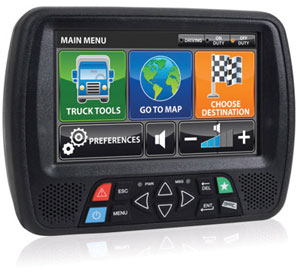Many Colorado truck drivers, owner operators and trucking companies are hesitant to implement electronic on board recording systems (EOBR). But, this is the way that our industry is headed and the technology should be embraced. Electronic onboard recorders aren’t mandatory yet, but the FMCSA is moving toward making them a requirement as more rules and more lawsuits come into play.
It’s important to see the benefits to implementing EOBRs, since most owner/operators will be using them before too long. In fact, large Shippers are monitoring their carriers, safety ratings and service violations (CSA scores) with EOBRs.

1. Real-Time Tracking Measures
EOBRsautomatically register the hours that drivers are behind the wheel. They can include everything from GPS and Bluetooth wireless technology to speed tracking, fuel economy, hard braking, and other performance and safety measures. These measures help prevent hours-of-service violations, vehicle maintenance violations and enable law enforcement agencies to better identify serial violators.
2. Fewer Citations
While EOBRs are a substantial investment for trucking companies, they also increase productivity and save money in the long-term by keeping companies in compliance. During 2011, inspectors issued 1.2 million citations for driver violations. Nearly fifty percent of these were due to violations of the hours of service, or logbook entries. Electronic on board recording systems keep drivers from exceeding the numbers of hours allowed by the Federal Motor Carrier Safety Administration, which reduces the chances for citations.
For example, if you are a driver and see that you’re two hours away from a destination, but only have an hour left in your logbook, you have to pull over beforehand to avoid being in violation. You can’t push through or wait until you’re out of hours to find a place to stop. This does require a bit of planning, but EOBRs show a real time clock of how many hours you’ve logged so you can look ahead and decide a good stopping point. If you can’t make it to your destination, you can make the hours up during your 70 hours.
3. Improved Safety Checks
Trucking companies can watch where their trucks are in real-time to quickly respond to safety issues and monitor drivers’ behaviors and performance. For example, if a driver’s behavior is consistent, but the truck’s fuel efficiency changes, maintenance can check the vehicle and correct issues before they become a problem.
At the end of the day, paper logbooks are only as good as the driver using them, but FMCSA rules on hours of service must be followed no matter how hours are recorded. Everyone needs to follow the service rules, and doing it electronically ensures accuracy and increases responsibility. Plenty of trucking can be done within service hours if drivers follow the rules correctly.
